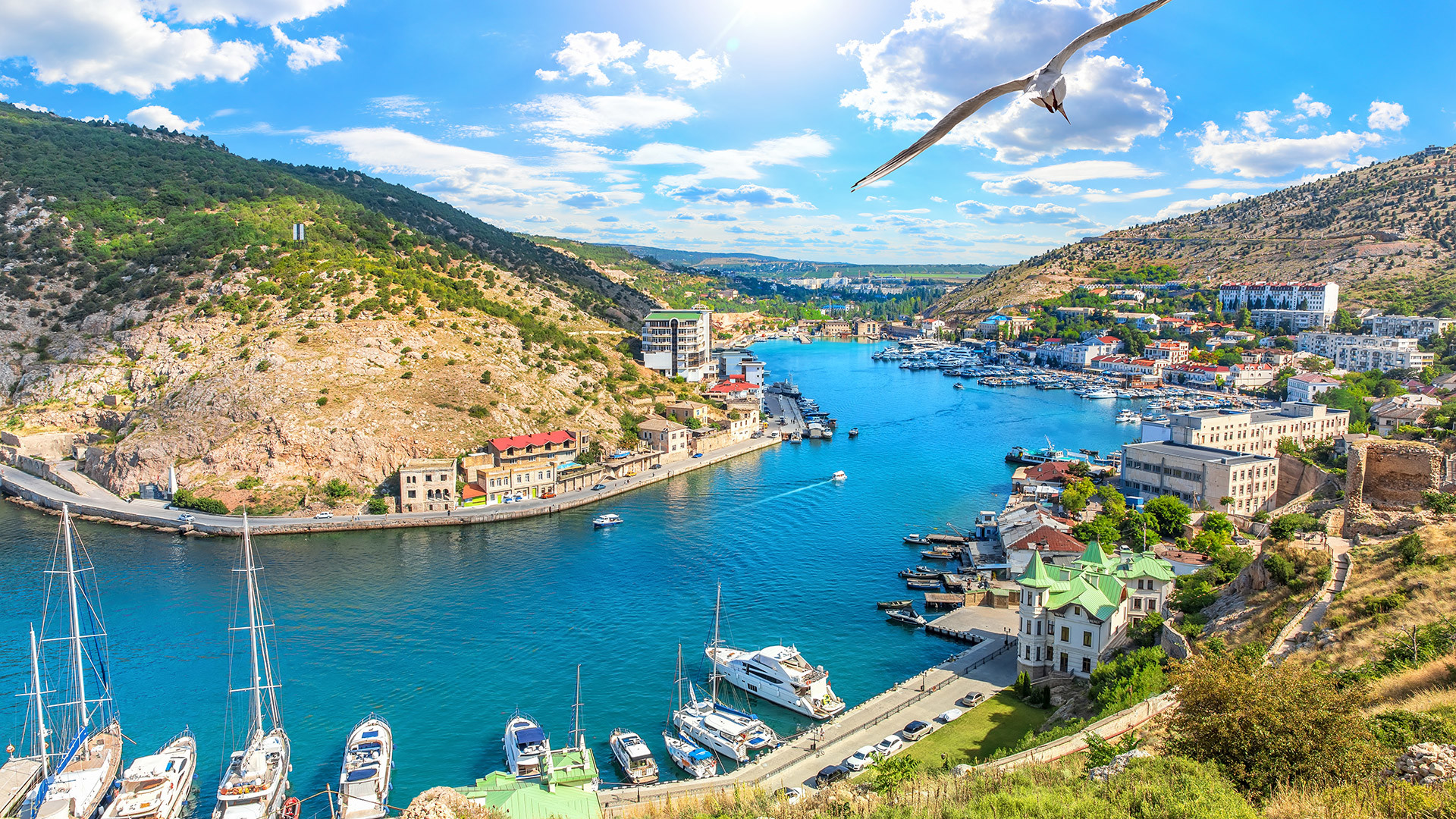
Balaklava
Getty Images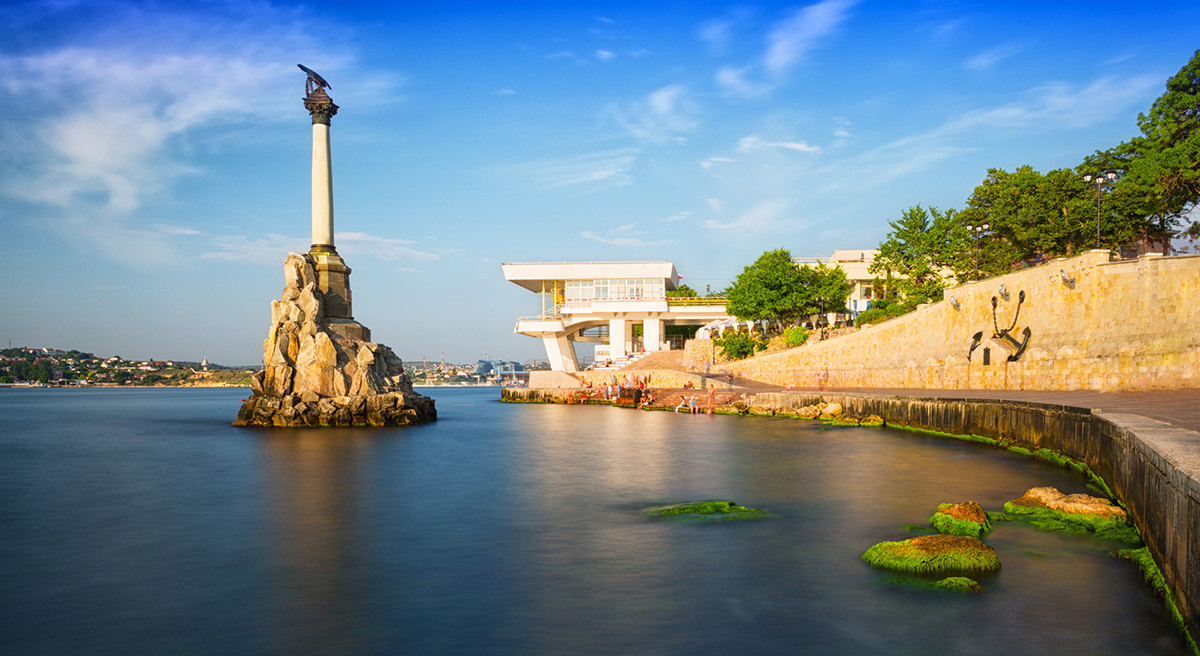
The Monument to the Sunken Ships
Legion MediaThe best place to start your Crimean voyage is in the regional capital of Sevastopol. Home to the Black Sea Fleet, it has the status in Russia of a City of Military Glory. Take a sightseeing boat along Sevastopol Bay and view the many ships, including ones on active service. Be sure to visit the magnificent Defense of Sevastopol panorama, which tells the story of the Crimean War 1854-55.
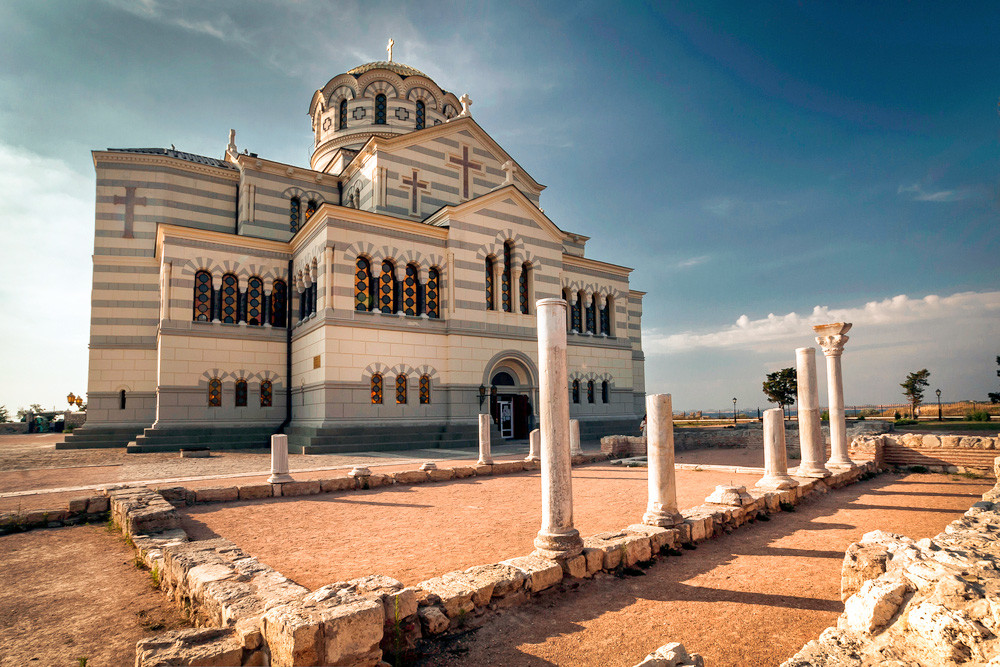
The Saint Vladimir Cathedral in Chersonesos
Legion MediaOne of the city’s main attractions is the ruins of the ancient Greek polis Chersonesus Taurica. In the 10th century, it belonged to Byzantium and, according to legend, was the place where Prince Vladimir converted to Orthodoxy and baptized Rus.

The Church of the Resurrection of Christ
Igor Derevyagin (CC BY-SA 3.0)Foros is the southernmost point of Crimea. In Soviet times, this ancient settlement with its picturesque rocky coast and mild climate, breezes and pine forest was the party elite’s destination of choice for spa vacations and treatment. Incidentally, its sanatoriums are still operational.
The main attraction of Foros is the 19th-century Church of the Resurrection, overlooking a steep cliff. From the church, be sure to go up into the mountains and stop in at the Baydarskie Vorota restaurant on the mountain pass for the best chebureki (mutton pies) in Crimea and some equally mouth-watering views.

Balaklava Bay
Getty ImagesThe winding Balaklava Bay offers an incredible natural landscape, as well as a real Crimean marina, dotted with yachts and boats. We highly recommend renting a cutter and sailing across the bay to the open sea to the rocky caves.

Fortifications in the Military History Museum of Balaklava
Legion MediaBut perhaps the highlight of Balaklava is the Military History Museum. It is located inside an underground complex which in Soviet times housed a shelter and a submarine repair facility, not to mention a nuclear arsenal.
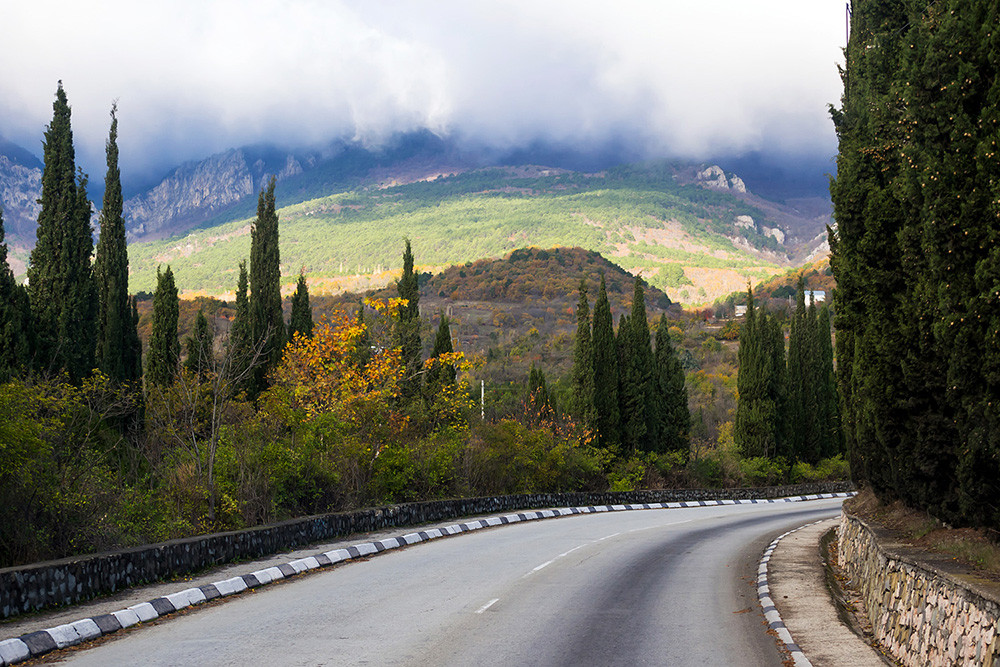
A view on the longest trolleybus route in the world
Peggy LohseThere are many ways to get from Simferopol Airport to Yalta, but we recommend that you try out the longest trolleybus route in the world — 86 kilometers along a picturesque mountain road with views of the sea.
Yalta is the unofficial capital of the southern coast of Crimea, and one of the most popular resorts on the peninsula, famous for its sandy beaches. It is also a party city that never sleeps, full of lively restaurants serving fresh fish and seafood, and all kinds of people strolling down the long promenade, where you'll also see street artists and magicians.
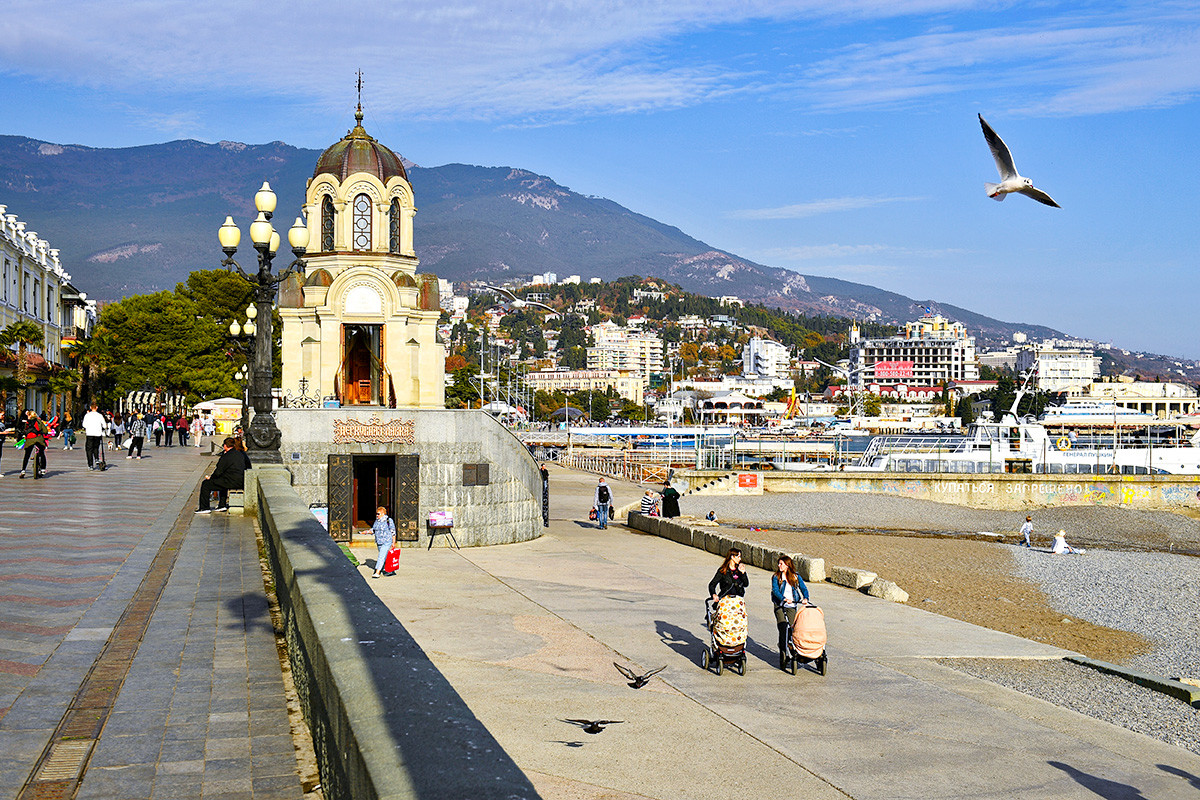
Yalta Embankement
Konstantin Mikhalchevsky/SputnikRussian writers were fond of taking health trips to Yalta — Anton Chekhov spent the last six years of his life here, and his cottage has been converted into a museum. On the embankment there is even a monument to Chekhov and the “lady with lapdog” from his eponymous story, which was set here.
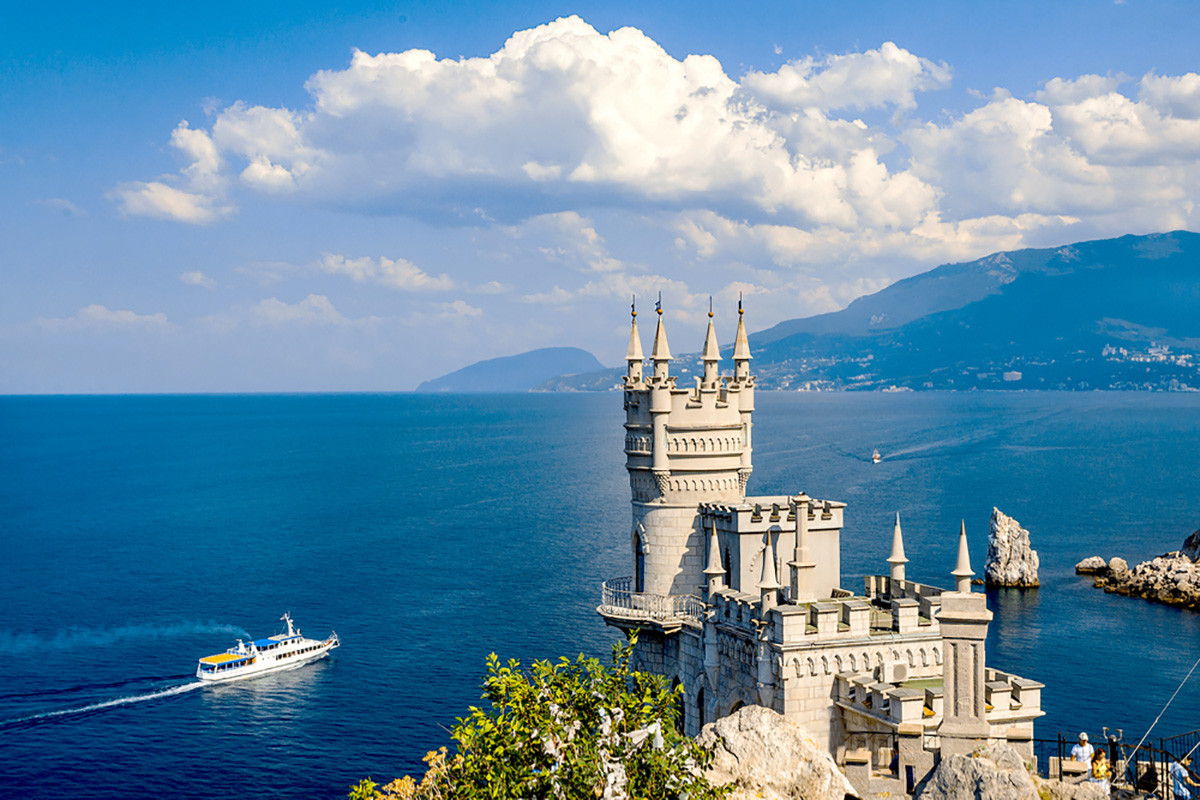
The Swallow's Nest
Legion MediaNot far from the city is the calling card of the whole of Crimea: the decorative Gothic-style Swallow's Nest castle. We recommend taking a pleasure craft along the southern coast (known as Greater Yalta) and gazing up from the water at this majestic edifice perched bird-like atop a sheer cliff.
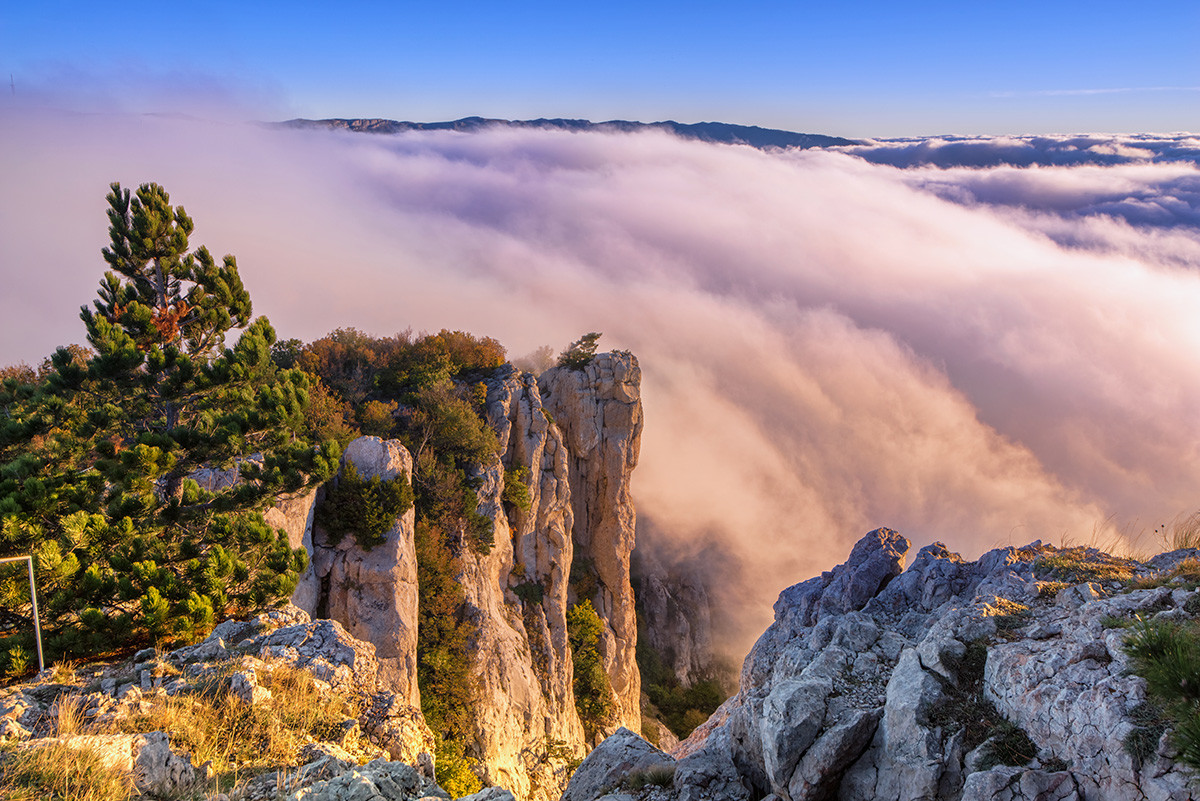
A view from the top of Ai-Petri
Getty ImagesIn addition to seaside recreation, Crimea is famous for its mountains. One of the highest peaks is Ai-Petri (1,234 m), which can be reached via one of the longest unsupported cable cars in Europe. A slightly less dramatic way up is by road (albeit an extremely serpentine one), while enjoying a view of the Uchan-Su waterfall.

One of the longest unsupported cable cars in Europe
Getty ImagesAt the summit, go to the restaurant for some Crimean Tartar dishes: pilaf, laghman (noodles, meat, veg) and chebureki, and taste some authentic Crimean wines. But don’t forget to dress warmly, even in summer. It’s very windy high up.
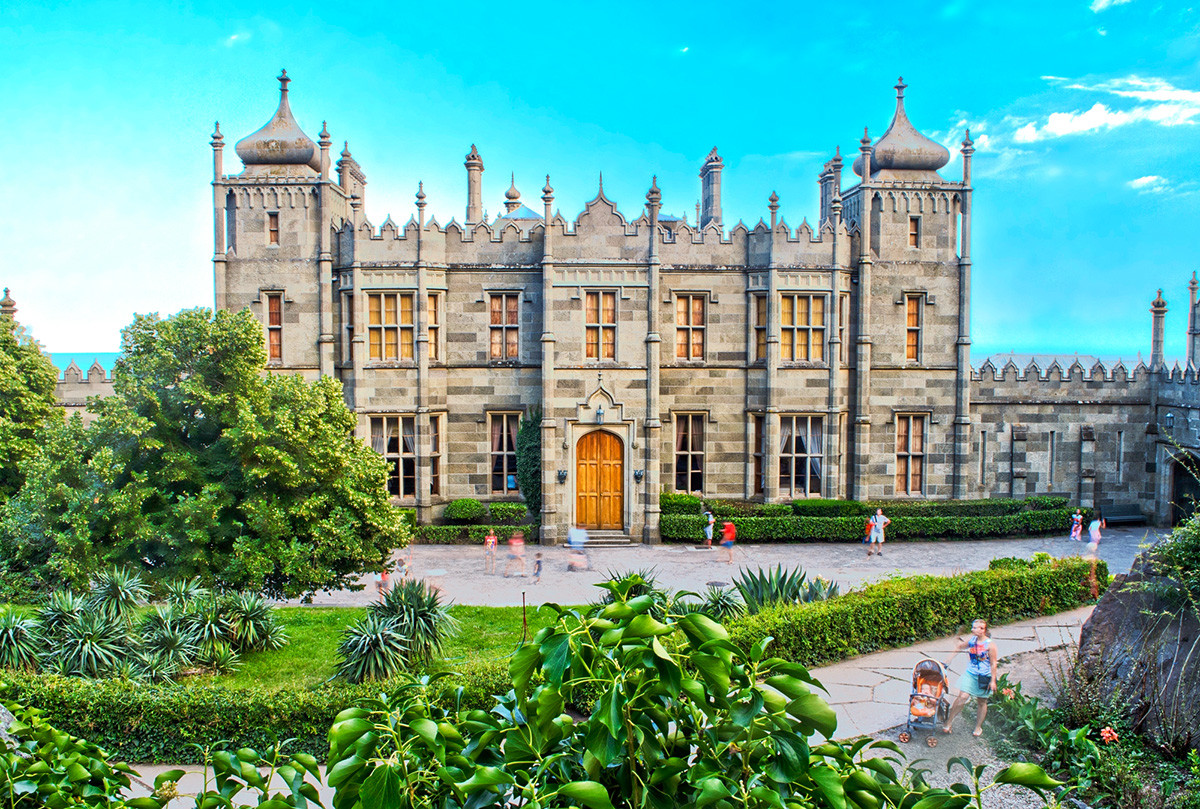
The Vorontsov Palace
Legion MediaThis small resort town is famous primarily for the Vorontsov Palace, built in the English style. You can read more about the palace here.
In the 19th century, an elegant park covering more than 40 hectares was laid out around the palace. Its landscape featuring numerous sculptures, fountains, terraces, and more than 200 species of plants from all corners of the globe is a tourist magnet. Incidentally, Alupka offers incredible views of both Ai-Petri and the Black Sea, which is why the illustrious seascape painter Ivan Aivazovsky was so fond of it. He even has a cliff named in his honor.
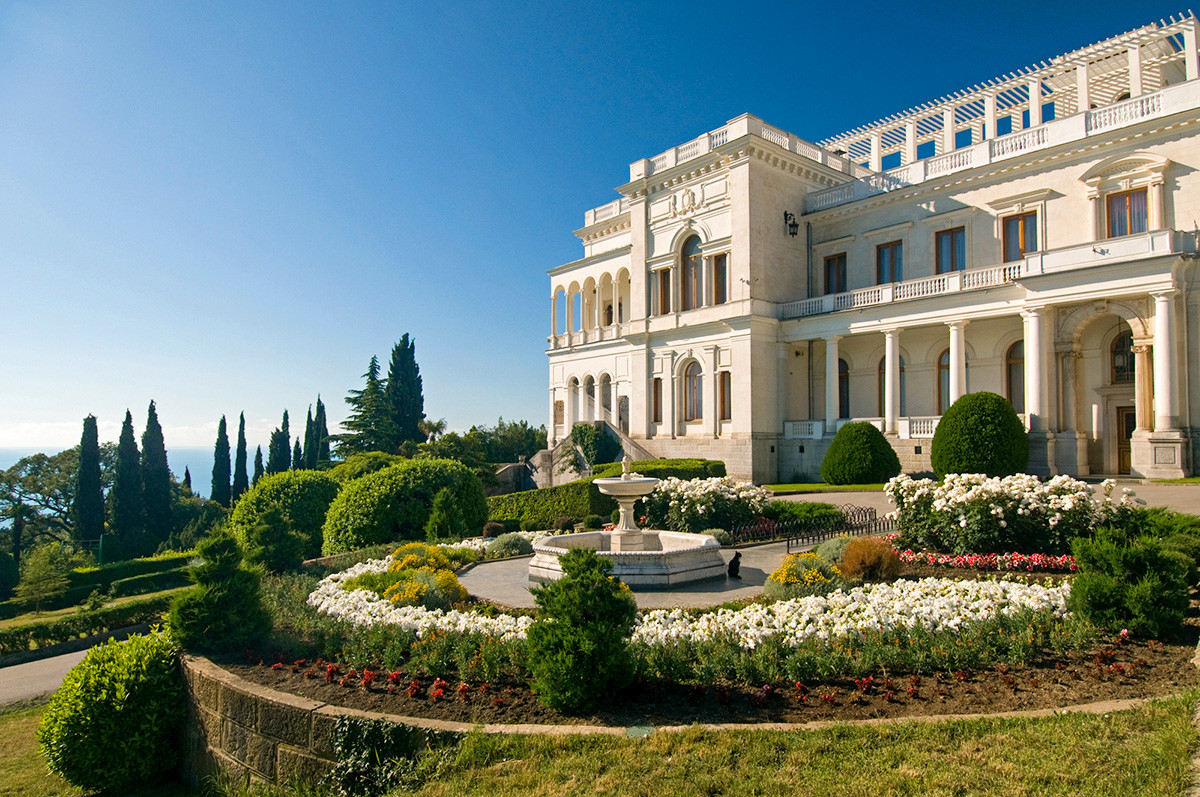
The Livadia Palace
Legion MediaNot far from Yalta stands one of the most luxurious palaces in Crimea, which served as the summer residence of Emperor Alexander II. It was customary for the Russian tsars to vacate here in summer with their families. Later, Nicholas II had a separate wing built for himself.
In Soviet times, the imperial palace was converted into a sanatorium for workers and peasants; and the famous writer Maxim Gorky enjoyed rest cures here. In February 1945, during WWII, it hosted the Yalta Conference of the Allied leaders Joseph Stalin, Winston Churchill and Franklin Roosevelt.
Incidentally, the Livadia Palace is where the protagonist of Jonathan Littell’s award-winning novel The Kindly Ones resides and, as the author describes, takes therapeutic strolls along the Tsar's Path. You can read more about the palace here.
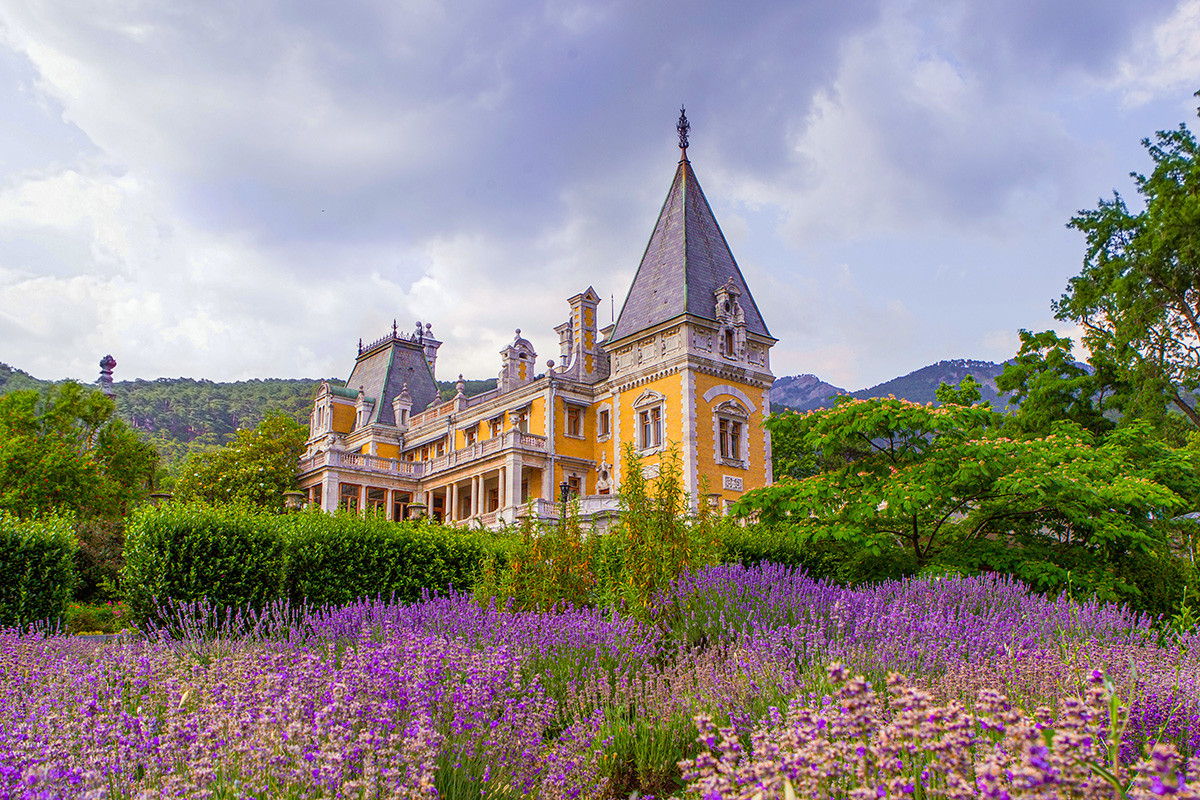
The Massandra palace
Legion MediaAnother summer imperial residence with a beautiful French park can be seen in the settlement of Massandra. However, it was not used as a long-term residence by any of the tsars, who preferred Livadia. Read more about this enigmatic place here.
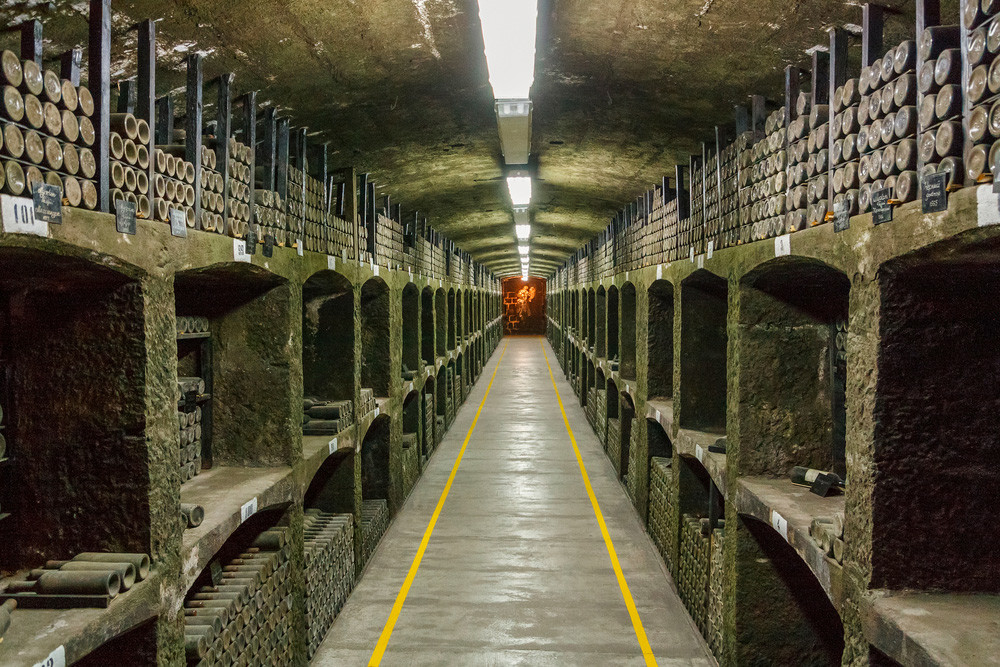
Massandra wine cellar
Legion MediaVisiting Crimea and not tasting the local wine is simply a crime. Thankfully, the Massandra wine factory offers excursions and tastings in eight of its branches across the peninsula. There you can visit the vineyard, wander around the wine cellar, and observe the winemaking process.
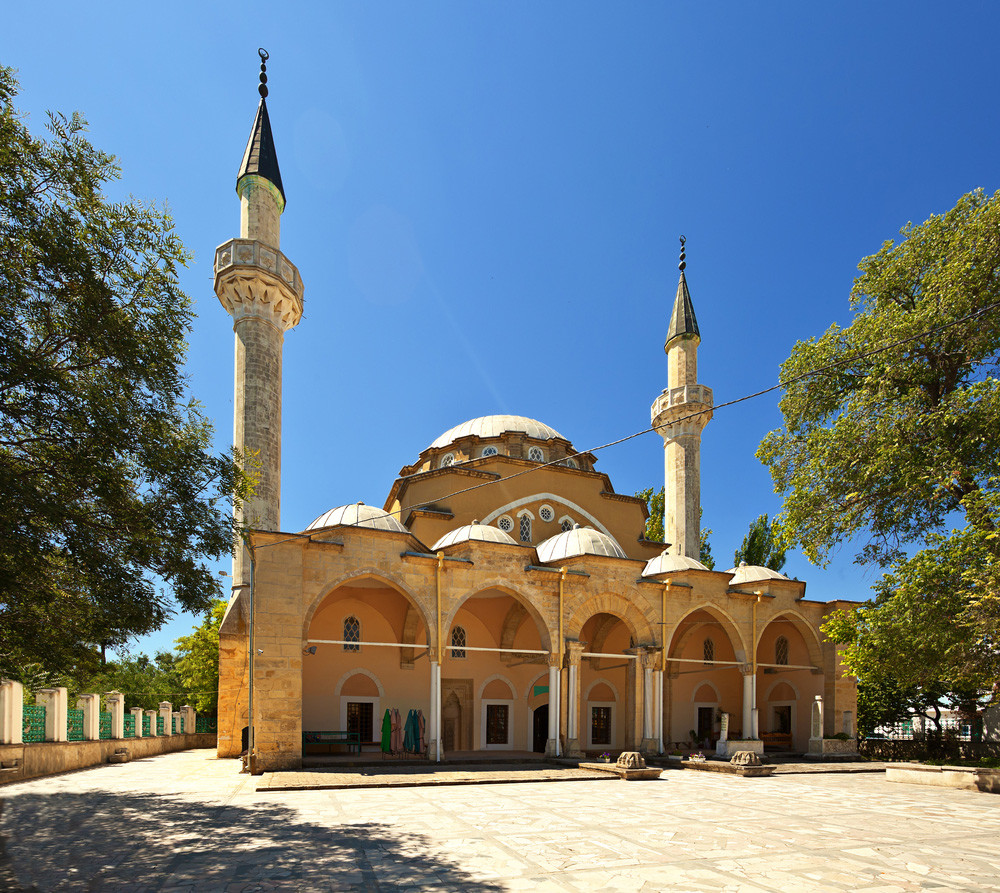
The Juma-Jami Mosque
Legion MediaThis city is ideal for families with children — it boasts sandy beaches and a warm shallow sea. Here many children's camps have remained since Soviet times. It is also home to the only Muslim monastery in Crimea, dating back to the 15-16th centuries, as well as the 16th-century Juma-Jami Mosque, both reminders of the centuries-long Ottoman rule over Crimea.
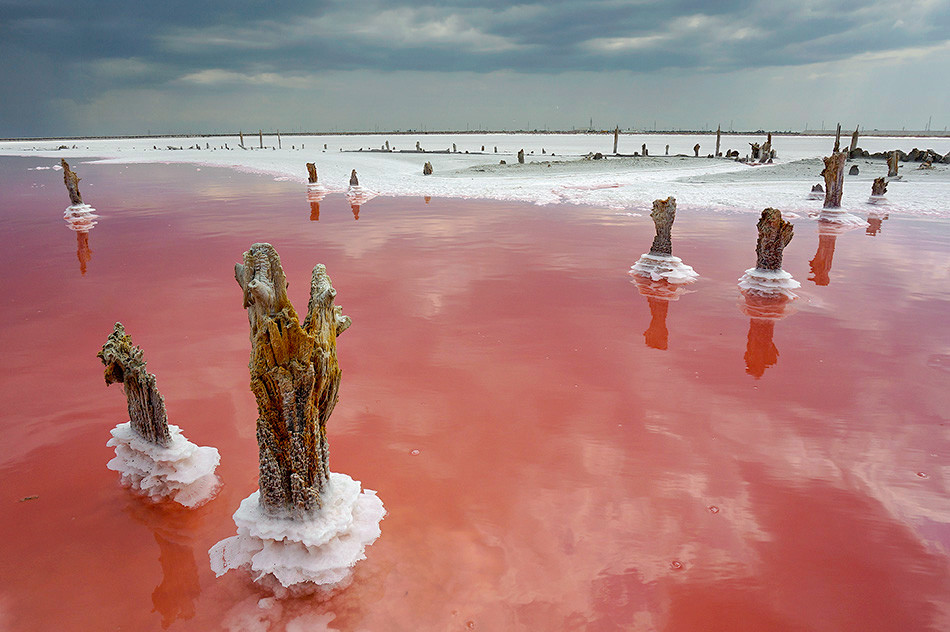
Lake Sasyk
Angu (CC BY-SA 3.0)Not far from Yevpatoria is a genuine miracle of nature in the shape of Lake Sasyk, separated from the Black Sea by a narrow strip of land. The lake’s uniqueness lies in its color, which varies from pink to bright red. The secret is in the carotene-producing microorganisms that live in the water. The ancient Greeks were the first to extract salt from the lake, which was so good it later made its way onto the table of the Russian tsars. And concealed under the layer of salt is therapeutic mud. See some incredible photos of the lake here.

Ruins of Yeni-Kale fortress built by Ottoman Turks
Legion MediaLocated on the eastern coast of Crimea, Kerch is the first city that greets visitors coming via the recently constructed Crimean Bridge. Kerch also has the distinction of being the oldest city in Russia, believed to have been founded by the ancient Greeks in the late 7th century BC.
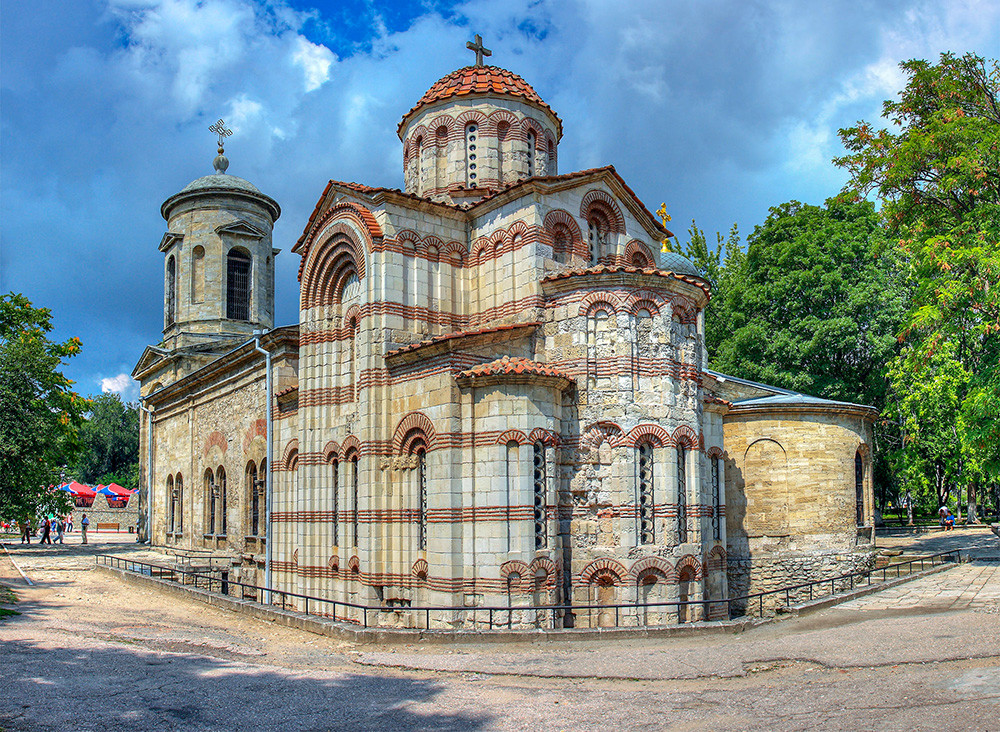
The 8th century Church of Saint John the Baptist
Sergey Ashmarin (CC BY-SA 3.0)Remarkably, Kerch has preserved archeological evidence of all the historical periods of Crimea: from ancient ruins and an 8th-century Byzantine basilica to a late 17th-century Turkish fortress and a 19th-century Russian citadel.
If using any of Russia Beyond's content, partly or in full, always provide an active hyperlink to the original material.
Subscribe
to our newsletter!
Get the week's best stories straight to your inbox